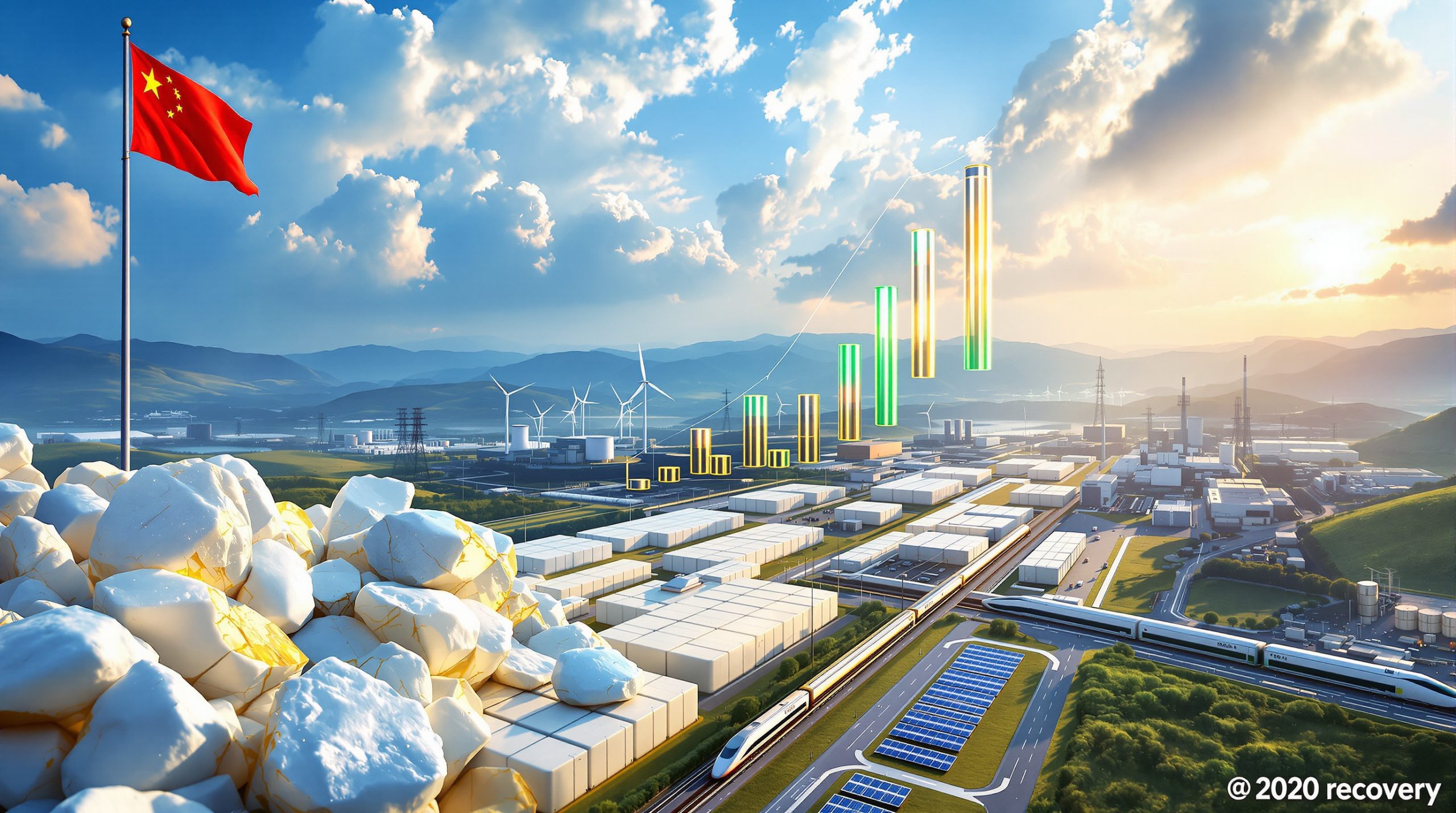Understanding Stagflation and the Commodity Supercycle
Stagflation presents a unique economic challenge that fundamentally differs from traditional recessions or growth periods. With inflation persisting above target rates while growth metrics decline across major economies, we're witnessing early signals of a significant capital rotation – away from financial assets and toward hard assets like commodities and infrastructure. This transformation isn't merely cyclical but potentially represents the early phase of a commodity supercycle that could reshape investment strategies for years to come.
The Perfect Economic Storm
Stagflation combines three challenging economic conditions: persistent inflation, stagnant economic growth, and rising unemployment rates. Unlike typical economic downturns where inflation tends to fall alongside growth, stagflation creates a particularly difficult environment for traditional investments and monetary policy responses.
Current economic indicators across major economies reveal inflation remaining stubbornly above central bank targets while GDP growth rates decline, creating the textbook conditions for stagflationary pressure. This economic paradox forces investors to reconsider conventional portfolio allocations that worked well in previous cycles.
Historical Context and Modern Differences
The 1970s stagflation provides important historical context, but today's environment differs in several critical aspects. Modern stagflation and capital rotation into commodities features structural policy commitments creating persistent demand for specific commodities regardless of broader economic slowdowns.
Government-mandated infrastructure spending, electrification initiatives, and clean energy transitions create a policy-backed demand floor for key industrial inputs. This represents a fundamental shift from previous cycles where commodity demand was more directly tied to economic growth rates.
Additionally, today's financial markets are more interconnected globally, with central bank balance sheets significantly larger relative to GDP than in previous stagflationary periods, limiting policy flexibility.
How Are Monetary Policies Driving Capital Rotation?
The monetary policy landscape has become increasingly complex, with central banks facing impossible choices that ultimately drive capital to seek refuge in hard assets and commodities.
Central Bank Dilemmas
Central banks worldwide confront an impossible choice: combat persistent inflation with higher interest rates (potentially worsening economic growth) or stimulate growth with lower rates (potentially fueling further inflation). This policy paralysis creates ideal conditions for a capital rotation away from rate-sensitive assets toward inflation-resistant alternatives.
Furthermore, ballooning fiscal deficits in major economies complicate monetary policy effectiveness. Government debt-to-GDP ratios have reached levels that make meaningful deficit reduction politically challenging without sustained inflation or financial repression, limiting central banks' ability to normalize monetary conditions.
Recent research from the Bank for International Settlements suggests that when government debt exceeds 80% of GDP, monetary policy transmission mechanisms become significantly less effective – a threshold most advanced economies now exceed.
Fiscal Expansion's Impact on Markets
Government spending continues expanding despite slowing economies, creating persistent demand for infrastructure materials and energy. This fiscal-driven demand maintains pressure on commodity prices even as other sectors experience contraction.
Major infrastructure bills in the United States and similar initiatives in Europe, Canada, and parts of Asia ensure continued demand for copper, steel, cement, and energy inputs regardless of broader economic conditions. These US economic tariffs and inflation contribute to inflationary pressures while creating structural support for commodity prices.
The fiscal situation has become particularly challenging as demographic shifts increase healthcare and pension costs while the debt service burden grows with higher interest rates, creating what economists call a "fiscal doom loop" that's difficult to escape without significant inflation or growth.
Why Are Precious Metals Leading the Commodity Rotation?
Precious metals have historically performed well during stagflationary periods, and current market signals suggest they're once again taking a leadership role in the commodity rotation.
Gold: Breaking Out of Consolidation
Gold has surged beyond $2,400/oz, breaking decisively from its decade-long consolidation pattern. This movement represents more than speculative interest—it signals a structural repricing based on fiscal realities and monetary uncertainty.
Institutional investors are increasing allocations to gold as both an inflation hedge and portfolio stabilizer. Central bank gold purchases have reached record levels, with emerging market central banks particularly active in diversifying reserves away from fiat currencies.
Recent analysis from the World Gold Council indicates that central banks added over 1,136 tonnes of gold to reserves in 2022-2023, the highest two-year total on record. This central bank buying represents a significant shift in global reserve management that provides underlying support for all-time high gold prices beyond investment demand.
Silver's Dual Role in the New Economy
Silver has moved above $30/oz, reflecting its unique position at the intersection of monetary protection and industrial necessity. The compression of the gold-to-silver ratio (the number of silver ounces equivalent to one ounce of gold) historically signals broader commodity bull markets.
Silver's industrial applications continue expanding in critical growth sectors including solar energy (photovoltaic cells), electric vehicles (various electrical components), and electronics (conductivity applications). These industrial demands create a fundamental floor for silver prices even as its monetary characteristics attract investment capital during periods of financial uncertainty.
The gold-to-silver ratio, which averaged approximately 85:1 over the past decade, has compressed toward 75:1, suggesting silver's value relative to gold is increasing. Historically, this ratio compression has often preceded broader commodity price strength, as seen in recent silver market squeeze events.
| Metal | Current Price Range | YoY Change | Key Demand Drivers |
|---|---|---|---|
| Gold | $2,300-2,400/oz | +15-20% | Monetary hedge, central bank buying, portfolio diversification |
| Silver | $28-32/oz | +25-30% | Industrial applications (solar, EVs), monetary hedge |
How Are Industrial Metals Positioned for the Supercycle?
Industrial metals show strong fundamental positioning for a potential supercycle, with supply constraints colliding with structural demand growth across multiple sectors.
Copper: The Electrification Essential
Copper inventories have reached critically low levels, with London Metal Exchange stocks representing less than one week of global demand in recent periods. This supply constraint collides with accelerating demand from electrification initiatives.
The electrification of transportation, expansion of renewable energy, and grid modernization all require substantial copper inputs. An electric vehicle uses approximately 2-4 times more copper than a conventional internal combustion engine vehicle, while renewable energy systems require 4-5 times more copper per megawatt than traditional generation.
Industry analysts are now making record copper price predictions with estimates that demand could grow by 50-70% by 2035, requiring significant new mine development at a time when permitting has become increasingly difficult and ore grades are declining. The average copper ore grade has fallen from approximately 2% in the 1970s to less than 1% today, requiring more material to be processed for the same copper output.
Battery Metals: Supply Constraints Meet Policy Mandates
Nickel and lithium markets demonstrate how government policies create demand floors regardless of economic conditions. While prices have been volatile, the structural trend remains upward as supply struggles to match policy-driven demand growth.
The transition to higher nickel content in EV batteries continues despite price volatility, as automakers seek greater energy density. Indonesia dominates global nickel production growth, raising concerns about supply concentration and environmental practices.
Lithium markets have recently corrected from all-time highs but remain well above historical averages. As noted in recent lithium brine market insights, projected demand growth from electric vehicles and grid storage applications suggests supply will remain tight over the long term despite periodic oversupply conditions.
Geological constraints add another dimension to battery metal supply challenges. Unlike more abundant metals, economic lithium deposits are geographically concentrated, with over 75% of global reserves located in the "Lithium Triangle" of Chile, Argentina, and Bolivia, plus Australia. This concentration creates geopolitical risks in supply chains.
| Metal | Current Price | Supply Status | Demand Outlook |
|---|---|---|---|
| Copper | $4.00-4.50/lb | Multi-year inventory lows | Structural growth from electrification |
| Nickel | $8-10/lb | Production concentration concerns | Increasing battery requirements |
| Lithium | $10-15/lb | Stabilizing after volatility | Government-backed supply chain development |
What's Happening with Traditional Infrastructure Commodities?
While technology metals capture headlines, traditional construction and infrastructure materials face their own supply-demand dynamics that contribute to stagflationary pressures.
Steel and Cement: The Overlooked Inflation Drivers
Traditional construction materials like steel and cement represent the foundation of infrastructure spending and contribute significantly to embedded inflation. These materials are experiencing steady price increases as government infrastructure initiatives create persistent demand.
Steel production remains energy-intensive despite efficiency improvements, making it vulnerable to energy price volatility. Similarly, cement production generates approximately 8% of global carbon emissions, creating regulatory and cost pressures as carbon policies tighten globally.
Infrastructure spending packages across major economies ensure steady demand for these materials even during economic slowdowns. The American Society of Civil Engineers estimates the United States alone faces a $2.6 trillion infrastructure investment gap over the next decade, creating a structural demand floor for construction materials.
Energy Commodities: Institutional Underinvestment Creates Opportunity
Despite ESG-driven divestment, global oil and natural gas demand continues to rise. The resulting underinvestment in production capacity creates potential supply constraints that could accelerate price movements.
Capital expenditure in the oil and gas sector has declined significantly from peak levels, with many major producers prioritizing shareholder returns over production growth. This capital discipline creates potential supply constraints that could support prices even during periods of slower economic growth.
The International Energy Agency estimates that investment in oil and gas exploration and production declined by over 30% between 2014 and 2020. While some recovery has occurred, investment remains below levels needed to offset natural production declines and meet projected demand growth, particularly in emerging markets.
How Is Real Estate Losing Its Capital Magnet Status?
Real estate has traditionally served as a primary destination for investment capital, but structural changes are undermining this role and potentially accelerating the rotation toward commodities.
Residential Property: From Wealth Generator to Risk Asset
For decades, residential real estate served as a primary capital absorber across developed economies. This era appears to be ending as affordability collapses under high mortgage rates and inventory levels increase.
The wealth effect that supported consumer spending through home equity extraction is weakening, redirecting capital toward alternative hard assets. In many major markets, the ratio of home prices to median incomes has reached unsustainable levels, limiting further appreciation potential without significant wage growth.
Recent data from the National Association of Realtors shows the median existing-home price in the United States has increased approximately 50% since 2019, far outpacing wage growth. This disconnection between housing costs and incomes creates vulnerability even as population growth continues.
Commercial Real Estate: Structural Challenges Beyond Cyclical Factors
Commercial property faces permanent demand destruction from hybrid work models, with office utilization still 30-40% below pre-pandemic levels in major cities. This structural decline creates a capital trap where institutional investors struggle to redeploy assets.
Office vacancy rates have reached multi-decade highs in many major markets, with properties in secondary locations facing particular challenges. The capital tied up in these assets becomes increasingly difficult to redeploy as valuations adjust to new utilization realities.
The Mortgage Bankers Association estimates that approximately $1.2 trillion in commercial real estate debt will mature between 2023 and 2025, creating refinancing challenges in a higher interest rate environment with reduced property values. This refinancing wall could accelerate capital rotation from real estate to more productive assets.
What Regional Differences Are Emerging in the Stagflationary Environment?
Regional economic characteristics create significant differences in how stagflation impacts various countries and regions, with resource exporters generally better positioned than importers.
Policy Divergence: Resource Exporters vs. Importers
Countries with robust commodity export sectors are better positioned to weather stagflationary pressures. Resource exporters can offset domestic inflation through export earnings, while importers face compounding pressures from both inflation and currency weakness.
Australia, Canada, Brazil, and parts of Africa with significant resource exports benefit from commodity price strength even as their domestic economies face inflationary pressures. By contrast, resource-importing regions like the European Union, Japan, and parts of emerging Asia face greater challenges balancing growth and inflation.
Currency dynamics amplify these differences, with commodity currencies often strengthening during periods of rising resource prices, providing additional inflation protection for resource exporters while compounding inflationary pressures for importers.
Infrastructure Investment: Productivity Enhancement vs. Political Projects
The productivity impact of infrastructure spending varies significantly by region. Countries focusing on export-enabling infrastructure (ports, energy export facilities, transmission) gain competitive advantages over those prioritizing politically-driven projects with lower economic returns.
Investment in export-oriented infrastructure creates economic multiplier effects that can partially offset inflationary pressures. By contrast, infrastructure spending focused primarily on domestic consumption without productivity enhancements may exacerbate stagflationary conditions by increasing demand without expanding supply capacity.
Regional differences in permitting efficiency and construction costs also create significant variations in infrastructure investment outcomes. Countries with streamlined permitting processes can deploy capital more efficiently, potentially reducing the inflationary impact of infrastructure spending.
How Should Investors Position for the Commodity Supercycle?
The potential commodity supercycle requires strategic portfolio adjustments to capitalize on structural trends while managing risks specific to commodity investments.
Portfolio Allocation Shifts
Institutional portfolios have historically maintained 10-15% allocations to commodities, but current levels average just 4-5%. This significant underweight creates substantial room for capital rotation as asset managers rebalance toward historical norms.
The structural case for increasing commodity allocations includes both inflation protection and potential capital appreciation as supply constraints meet policy-driven demand. This allocation shift represents a significant potential capital flow into commodity markets over coming years.
As noted by investment strategist Mitch Smith, investment strategies should consider both direct commodity exposure through futures or physical backing and indirect exposure through equities of resource producers. The optimal approach varies by commodity type and market structure, with some markets more accessible through producer equities while others offer efficient direct investment vehicles.
Commodity Sector Selection Strategy
Different commodity groups will likely outperform at various stages of the rotation. Precious metals typically lead, followed by industrial metals and energy. Agricultural commodities often lag but eventually participate as input costs drive price increases.
Sector selection should consider both the stage of the commodity cycle and the specific supply-demand fundamentals of each commodity. Metals with structural supply constraints and policy-driven demand are likely to outperform those with more elastic supply responses or cyclical demand characteristics.
According to analysts at Dynamic Asset, investment timing also matters significantly in commodity markets, which often experience higher volatility than traditional financial assets. Dollar-cost averaging and position sizing strategies can help manage this volatility while maintaining exposure to long-term structural trends.
| Asset Class | Current Allocation | Historical Norm | Adjustment Potential |
|---|---|---|---|
| Commodities | 4-5% | 10-15% | +5-10% |
| Real Estate | 15-20% | 10-15% | -5% |
| Fixed Income | 35-40% | 30-35% | -5% |
What Are the Key Indicators to Monitor?
Several key indicators can help investors identify acceleration or potential interruption in the commodity rotation thesis.
Leading Signals for Acceleration
Several indicators can help investors identify acceleration in the commodity rotation:
- Gold-to-silver ratio compression, historically a leading indicator for broader commodity strength
- Copper inventory levels at major exchanges, with critically low levels signaling potential price pressure
- Energy sector capital expenditure trends, with continued discipline suggesting supply constraints
- Institutional fund flows into commodity ETFs and specialized funds, indicating broadening investor participation
Technical indicators also provide valuable insights, with many commodities showing similar price patterns at the early stages of previous supercycles. These patterns typically include multi-year consolidations followed by decisive breakouts on increasing volume.
Risk Factors That Could Derail the Thesis
While the structural case for commodities is strong, several factors could temporarily interrupt the rotation:
- Deflationary recession scenarios could temporarily reduce demand across commodity sectors
- Policy reversals on infrastructure commitments or clean energy transitions could impact specific commodities
- Technological disruptions affecting commodity intensity of use could alter long-term demand projections
- Coordinated central bank tightening beyond current expectations could create liquidity constraints affecting all asset classes
These risk factors require ongoing monitoring, but historical commodity supercycles have typically persisted through periodic setbacks and corrections, driven by the fundamental reality that supply expansions require years of investment and development.
What's the Long-Term Outlook for the Commodity Supercycle?
The potential commodity supercycle is supported by structural factors that extend beyond current economic conditions, suggesting a multi-year or potentially multi-decade trend.
Structural Drivers Beyond the Current Cycle
The commodity rotation is supported by several long-term structural factors beyond current stagflationary pressures:
- Declining ore grades requiring more extraction for the same output, particularly in copper, gold, and other base metals
- Geopolitical fragmentation of supply chains creating redundant demand and inventory building
- Increasing environmental and social costs of resource development extending project timelines and raising capital requirements
- Underinvestment in production capacity over the past decade creating persistent supply deficits
These structural factors suggest the current rotation could extend well beyond the resolution of current stagflationary pressures, potentially creating a secular trend rather than a cyclical adjustment.
The Transition Timeline
Historical commodity supercycles typically unfold over 10-15 year periods. If the current rotation began in 2020-2021, we may be in the early stages of a cycle that could extend well into the 2030s.
Different commodity groups typically take leadership positions at various stages of the cycle, with precious metals often leading, followed by industrial metals, energy, and eventually agricultural commodities. This rotation among commodity sectors creates opportunities for active management and tactical allocation adjustments throughout the cycle.
The long-term nature of commodity supercycles suggests investors should view current positions as strategic rather than tactical, with an investment horizon measured in years rather than months. This long-term perspective helps manage the inherent volatility of commodity markets while maintaining exposure to structural trends.
FAQ: Stagflation and Commodity Investment
What defines a commodity supercycle?
A commodity supercycle represents a multi-year or multi-decade period of structurally higher prices driven by fundamental supply-demand imbalances that cannot be quickly resolved. Unlike typical commodity cycles lasting 2-3 years, supercycles persist for 10-15 years as supply struggles to match structural demand growth.
Historical commodity supercycles include the post-World War II reconstruction period (1945-1957), the 1970s oil crisis and inflation era (1968-1980), and the China-driven commodities boom (2000-2014). Current structural factors suggest we may be entering a fourth modern supercycle centered around energy transition and infrastructure renewal.
How does stagflation differ from inflation or recession?
Stagflation combines high inflation with economic stagnation, creating a particularly challenging environment for traditional investments. Unlike pure inflation (typically accompanied by growth) or recession (typically deflationary), stagflation requires specific portfolio adaptations.
In inflationary growth environments, both equities and commodities can perform well. In recessionary environments, bonds typically outperform. But stagflation and capital rotation into commodities creates challenges for both traditional equities (pressured by slower growth) and bonds (pressured by persistent inflation), making real assets and commodities relatively more attractive.
Which commodities typically perform best during stagflation?
Historically, precious metals lead during early stagflation, followed by industrial metals and energy commodities. Agricultural commodities often lag initially but eventually participate as input costs rise.
Gold and silver typically benefit first from their monetary characteristics and inflation-hedge status. Industrial metals with supply constraints then respond to policy-driven demand and infrastructure spending. Energy commodities benefit from both inflationary pressures and underinvestment in production capacity.
The specific commodities likely to outperform in the current environment include those essential to electrification and energy transition (copper, nickel, lithium) as well as traditional inflation hedges (gold, silver) and energy inputs facing underinvestment (oil, natural gas).
Disclaimer: This article is for informational purposes only and does not constitute investment advice. Commodity markets involve significant risks and price volatility. Past performance is not indicative of future results. Investors should conduct their own research and consult with a qualified financial advisor before making investment decisions.
Ready to Spot the Next Major Mineral Discovery?
Discovery Alert's proprietary Discovery IQ model instantly notifies investors of significant ASX mineral discoveries, providing actionable insights before the broader market catches on. Visit our discoveries page to see how historic finds have delivered exceptional returns and start your 30-day free trial today.




